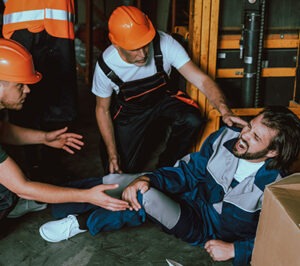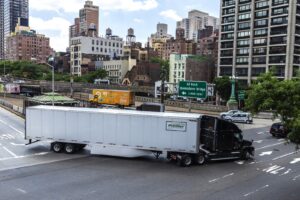Thousands of construction workers are injured on job sites throughout the state of New York on a yearly basis. If you’ve been injured in a construction accident, you need to speak to an experienced construction accident attorney so that they can review and evaluate all the facts of your accident and potential case and you can get advice on the laws that may apply to your case.
The Labor Laws of New York have been enacted to protect construction workers injured on job sites. Those labor laws were enacted to protect the construction workers and ensure that the sites on which they work are safe and that the procedures used to complete the work are in line with the safety policies and procedures.
If the owner of the job site, construction manager and/or the general contractor violate any of those laws and a construction worker is injured, that construction worker can bring a claim for personal injury against those parties. If you’ve been injured in a construction accident, generally your case may fall within three different sections. The Labor Law of New York as applied to construction accidents is divided into three sections.
1. Section 200
2. Section 240 (1)
3. Section 241 (6)
Depending on the facts of your construction accident, your case may involve each one of those sections, or it may only involve one of those sections and that’s why it’s important that you contact a construction accident Attorney so that they can obtain all of the facts of your accident and identify which of those sections applies to your accident.
Labor Law 200
Section 200 of the Labor of New York provides that all worksites:
“be constructed, equipped, arranged, operated, and conducted to provide reasonable and adequate protection to the lives, health, and safety of all persons employed therein or lawfully frequenting such places. All machinery, equipment and devices in such places shall be so placed operated, guarded, unlighted as to provide reasonable and adequate protection to all such persons. Violation of this section that causes an injury to a construction worker gives rise to a potential action against the liable parties.”
In essence, Section 200 of the Labor Law as referenced above generally deals with two main areas:
1. The means and methods of the work that was being conducted, i.e. how the work was being performed and who was responsible for dictating how that work was being done; and/or;
2. Dangerous conditions that exist on a job site, for example, tripping hazards or holes that exist on-site that a worker could fall into.
Whether an owner, construction manager, general contractor or applicable sub-contractors are responsible under section 200 will depend on (i) whether those parties supervised and directed the manner in which the work was being done or (ii) if it’s the case that the accident arises from a dangerous condition on-site, whether those parties had notice (knew of or should have known about) that condition or conditions and/or those parties created the dangerous condition that caused the accident.
Section 200 is a complex section and very fact-specific to each case, and it is for that reason that it’s very important that you reach out to an experienced personal injury attorney so that they can evaluate the facts of your case and identify if your action falls within section 200 of the Labor Law.
Labor Law 240 (1)
Commonly known as the New York Scaffold Law, the Labor Law Section of 240 (1) was enacted in 1855. It serves to protect all construction workers who risk life and limb to build this magnificent city.
The scaffold law doesn’t just apply to scaffolds, it applies to any accident or situation that arises on a job site as a result of an elevation differential, what that means is anything that involves a height difference. So, for example, a worker who falls from a height off a ladder or scaffold or where a worker is struck by something that has fallen, that is commonly known as a ‘falling object’ case. In New York, the labor law section 240 (1) is designed to protect workers who are working at heights or who are exposed to objects that may fall from above.
Section 240 (1) of the Labor Law is a very strict section of the construction accident law because if it is found that there is a violation of Section 240 (1), the defendants, which could be the owner, construction manager, general contractor and any applicable agents of the owner, are strictly liable for the accident. That means that if you can prove that there was a violation of the scaffold law 240 (1), 100% liability is granted against the defendants in your case even if the injured worker was negligent him/herself. The key factor is not whether the worker was negligent, the question is whether the worker was the sole cause of his or her own accident. If the worker is the “sole” cause of the accident, there is no liability on the Defendants.
The Law in this area provides that:
“All contractors and owners and their agents, except owners of one and two-family dwellings who contract for but do not direct or control the work, in the erection, demolition, repairing, altering, painting, cleaning or pointing of a building or structure shall furnish or erect,
or cause to be furnished or erected for the performance of such labor, scaffolding, hoists, stays, ladders, slings, hangers, blocks, pulleys, braces, irons, ropes, and other devices which shall be so constructed, placed and operated as to give proper protection to a person so employed.”
This law therefore doesn’t apply to owners of one and two family homes but does provide protection to construction workers and workers involved in the “erection, demolition, repairing, altering, painting, cleaning or pointing of a building or structure.”
This law can be controversial at times because it gives the injured worker the right to sue not only the owner of the construction site but also the general contractors and any agents of the owner, which may include the construction manager even though they may not have had anything to do with the work that the worker was doing at the time. The reason for this is that the Courts want to provide adequate protection to the worker that responsibility for site safety lies at the door of the owners and contractors on site. A common example of a 240 (1) case is;
• A worker who falls from a scaffold when the planks that he is standing on collapses;
• A worker who falls from a scaffold because of the lack of guardrails;
• A worker who was falls off a ladder that he was given to use when a scaffold would have been a safer device to use.
• A painter who falls off a ladder;
• An object or piece of equipment that falls as it is being hoisted upward and strikes a worker standing below.
• An object or piece of equipment that should have been secured to a wall or building that comes loose, falls and strikes a worker standing below.
• A cleaner who is struck by a piece of equipment.
The labor law of 240 (1) is designed to protect the worker in those instances and more. Again, just like section 200, it is crucial that if you’ve been involved in a construction accident, you reach out to an experienced construction accident attorney to discuss your case and see if Labor Law 240 (1) applies to your case.
Labor Law 241 (6)
New York Labor Law Section 241 (6) relates to construction sites and imposes a non-delegable duty on the property owner and the contractors to provide specific protection to construction workers. The law specifically provides that all areas in which construction, excavation or demolition work is being performed shall be constructed, shored, equipped, guarded, arranged, operated and conducted to provide reasonable and adequate protection and safety to the person’s employed therein or lawfully frequenting switch places. It’s important to note that the section explicitly states that it only applies to areas involved in construction, excavation and demolition work.
The New York Labor Law Section 241 (6) refers to and is intertwined with Part 23 of title 12 of the New York codes rules and regulations (NYCRR), and Part 23, known as the “Industrial Code” deals specifically with different items and activities that are protected under 241 (6). 
Section 241 subsection (6) deals with a number of items and a number of construction activities that may take place on a job site. It deals with the general responsibility of employers, the responsibility of employees, specific provisions to protect workers from general hazards, provisions related to personal protective equipment, the guarding of power-driven machinery, electrical hazards, combustion devices, safety railing, safety belts, harnesses, tail lines and lifelines, life nets, sidewalk, sheds, catch platforms, ladders and lateral ways, handprints propelled vehicles, illumination and many more activities that are conducted on job sites. In addition, section 241 (6) refers to specific provisions of part 23 that deal specifically with construction operations, demolition operations, excavation operations, scaffolding, the hoisting of materials, personnel hoists, cranes, power-operated equipment and internal combustion engines.
In order to hold an owner, contractor or owners’ agent responsible under Section 241 (6), you need to show that those parties have violated a specific and concrete provision of the Industrial Code to fall within the protection of Section 241 (6). To prove that violation may be straight forward and blatantly obvious but in many cases, to do that may require the hiring of a specific expert, an engineering expert, a safety expert, or a mechanical expert for example and those are decisions that will be taken by your construction accident attorney.
Just as with sections 200 & 240 (1), it is crucial that you speak to an experienced construction accident attorney to evaluate your case so that the attorney can understand the facts of your accident and make a determination as to whether section 241 (6) or any of the other sections of the labor law apply to your case.
These three sections of the Labor Law are broad and can be complex at times, and it is important that you speak with an experienced construction accident attorney when it comes to a construction accident that you’ve been involved in.
The Law Offices of Darren T Moore has experience representing victims of construction accidents and other personal injury accidents and has successfully recovered millions of dollars in compensation for workers injured on the job site.
An example of some of our construction accident results are:
• $6,500,000.00 for a construction worker who fell from a ladder.
• $1,800,000.00 for an undocumented construction worker who fell off a ladder;
• $1,500,000.00 for a union labourer who was struck by an object on a construction site;
• $600,000.00 for an undocumented construction worker who stood on a nail on a construction site and suffered a foot injury.
If you or a loved one have been injured in a construction accident, contact the Law Offices of Darren T Moore for a free consultation at 917-809-7014.
You deserve Moore Justice
(917) 809-7014We are 100% committed and dedicated to maximizing your recovery and obtaining the justice and compensation that you deserve.


